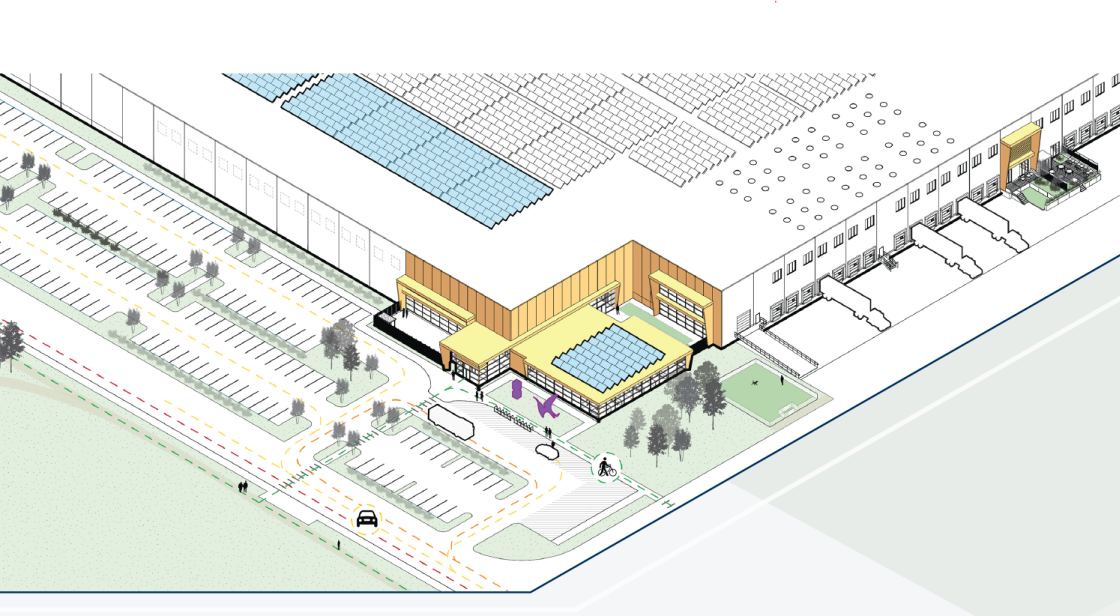The unprecedented growth in the science and tech industry, paired with increased adoption of U.S.-based manufacturing and e-commerce distribution models are converging to reshape industrial real estate development. This acceleration of demand has created fierce competition for a new type of industrial workforce, making employee attraction and retention a top strategic priority. With shifts in the nature of work, the workforce, and the workplace, employees now expect employers to consider and support their well-being in the workplace and beyond. And while technological advances are the key drivers and differentiators for many organizations, human-centered interaction remains the heart and soul of an organization. As a result, occupant health and wellness are becoming increasingly important for industrial developers and organizations to consider.
Pivoting to a wellness-based approach to industrial development, however, requires research-backed design interventions in the built environment and workplace policies. To do so, the NAIOP Research Foundation commissioned KSS and building consultants BranchPattern to develop a report offering design recommendations that improve occupant well-being in the industrial workplace.
We conducted secondary research, observed conditions in existing distribution centers, and interviewed occupants to collect information on key wellness concerns. We drew from these findings to design a prototype distribution center with elements and features that contribute to a healthier and safer work environment, and whose recommendations can be applied across industrial typologies.
Employers in the U.S. spend $575 billion per year on costs associated with poor employee health, such as loss of productivity due to absences and chronic health conditions, and injuries that result in worker’s compensation claims; similarly, employee turnover in an increasingly specialized workforce is riskier and more expensive than ever. Workplace policies of course play an important role in reducing accidents and injuries in the industrial workplace and maintaining strong employee rentention, but our research shows that effective, human-centric design can also improve safety and worker well-being. It is imperative we understand how to design for the industrial workforce in a way that can increase employee safety, satisfaction, and retention, impact productivity, and meet environmental, social, and governance (ESG) goals. Several environmental conditions can be addressed through design solutions including noise, isolation, identity, dignity, and community.
Using the framework of WELL and FitWel, two highly regarded healthy building certifications , we can establish the impactful categories and wellness objectives for consideration to promote safety, enhance perceived comfort, reduce body strain, encourage proper nutrition and hydration, enhance air quality, support mental and emotional health, instill a sense of belonging, and improve access to transportation and vital services. These wellness objectives serve as the basis of design and guide alterations to existing buildings as well as new development.
Click here to read the full report on designing for wellness in industrial workplaces,

